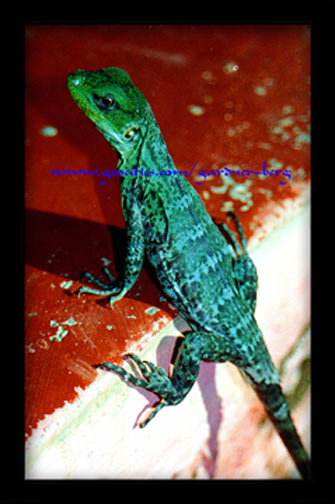
Translate:
Espa˝ol - Franšais
- Deutsch
- Italiano
- Portuguŕs
- Japanese
- Korean
- Chinese

Translate:
Espa˝ol - Franšais
- Deutsch
- Italiano
- Portuguŕs
- Japanese
- Korean
- Chinese

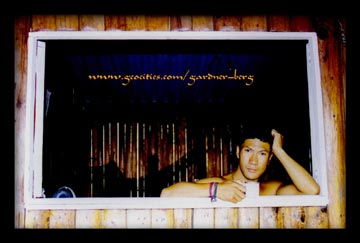 April 27, 1999 -- 5 hour bus ride to Acapulco - Mexico's most popular holiday resort. We got a little sun on the skin, a little sand in the pants, but no surf. During our stay three ocean liners were in. The "Sun Princess", in particular, was huge and daunting. They stopped in the bay for three days. Acapulco┤s historically significance centers around the Fuerte de San Diego where the last battle for Mexican independence was fought. It was also the only port authorized to receive Spanish trading galleons from Asia during colonial times.
April 27, 1999 -- 5 hour bus ride to Acapulco - Mexico's most popular holiday resort. We got a little sun on the skin, a little sand in the pants, but no surf. During our stay three ocean liners were in. The "Sun Princess", in particular, was huge and daunting. They stopped in the bay for three days. Acapulco┤s historically significance centers around the Fuerte de San Diego where the last battle for Mexican independence was fought. It was also the only port authorized to receive Spanish trading galleons from Asia during colonial times.
May 3, 1999 -- Eight hour trip to Puerto Escondido, east of Acapulco along the Pacific coast. Once an old fishing village but now a popular surfing spot. We stayed in a great place - our favorite so far. They were Caba˝as with hammocks owned by a really nice family. They did not speak any English but we thought they liked us because they offered us a lot of mangos and coconuts
 and even let us use their kitchen. They didn't do that with other guests. In our room we had a couple of unexpected roommates - 'Julio' and 'Iglesias'; two bright green iguanas. They would greet us every morning at 8:20 on their way to the rooftop to warm themselves in the sun. Iguanas are very common in Mexico. In fact, Mexico has about 700 species of reptiles which is more than any other country in the world. Puerto Escondido had a certain Balinese feel about it. Nothing was a problem, there's no rush; relax and enjoy the weather with light shore breezes in the afternoon while swinging in a hammock and watch some of the best sunsets around. We stayed two weeks and wished we could have stayed longer.
and even let us use their kitchen. They didn't do that with other guests. In our room we had a couple of unexpected roommates - 'Julio' and 'Iglesias'; two bright green iguanas. They would greet us every morning at 8:20 on their way to the rooftop to warm themselves in the sun. Iguanas are very common in Mexico. In fact, Mexico has about 700 species of reptiles which is more than any other country in the world. Puerto Escondido had a certain Balinese feel about it. Nothing was a problem, there's no rush; relax and enjoy the weather with light shore breezes in the afternoon while swinging in a hammock and watch some of the best sunsets around. We stayed two weeks and wished we could have stayed longer.
May 17, 1999 -- We left Puerto Escondido 08:45am heading east to Pochutla then hopped on another bus to Oaxaca City (6 and a half hours north of Pochutla). This particularly winding route goes via a cloud forest and then descends into Valles Centrales de Oaxaca. Arrival time was 8:30 pm that night. Oaxaca City is the main city for our excursions to 5 archeological sites. They are Monte Alban, Mitla, Yagul, Lambityeco, and Dainzu.
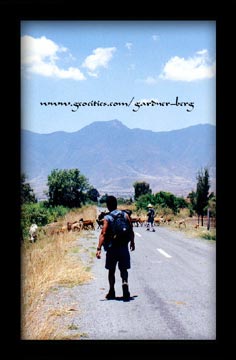
May 18 -- Oaxaca is another popular tourist town filled with many colonial-style buildings, colourful outdoor markets and traditional Indian presence (of Zapotec and Mixtec origin).
The Zapotecs first appeared in the Oaxaca region around 300 BC, building the extraordinary mountain-top city of Monte Alban, which was to dominate the area for some 900 years. They then abandoned the city and moved to Zaachila (a little further south). The Mixtecs, however, who had migrated into the Oaxaca Valley at that time and built their principal religious centre at Mitla (42 km E of Oaxaca). They continued to use the abandoned Monte Alban as a cemetery.
The Zapotecs in alliance with the Mixtecs successfully held the powerful Aztecs back from invading the valley.
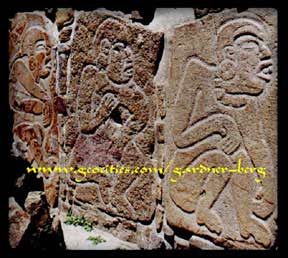
May 19, 1999 -- 10 km away are the city ruins of Monte Alban. Among the sites several tombs and pyramids is the 'Templo de los Danzantes has bas-reliefs, glyphs and calender signs, which are said to date from 5th century BC.
May 21, 1999 -- Spread along 42 km of road between Oaxaca and the town of Mitla are 4 separate ruin sites. We take a 7am bus directly to Mitla first to view the site there and then slowly view the others on our way back to Oaxaca using the ever-reliable and cheap colectivos that regularly go up and down the road.
Mitla (meaning 'place of the dead') is a 4 km walk from where the bus from Oaxaca dropped us off. We quickly grab some water and a snack on the way there - it was going to be another very hot day. During our walk, we noticed some small ruins here and there around the town. It must have been a large site before the present day town was constructed on top of it. The main site is fenced in with a church overlooking the entrance, positioned much like a sentry. This archeological site has some unique sculptured designs decorating the walls of the 'Hall of Mosaics', patterns almost reminiscent of those in the Middle East.

We walk around the 4 great palaces as they were once called, and also take a close-up view of and open section at the base of the church. We could see the stonework of this old city used as its foundation. One cannot help but generate a feeling of resentment to this systematic form of burying ancient cultures, particularly one so advanced, and then attempt to deny its existence.
We head back to the main road and catch a colectivo to the turn-off to Yagul 7 kms away. An uphill 2 km walk took us to a large Zapotec and Mixtec religious centre on a hilltop overlooking slopes filled with Agave and Cacti. Here is, perhaps, where the most perfectly-preserved ball courts yet discovered are found. In one of the patios (Patio 4) there is a triple tomb with elaborate wall sculptures and designs.
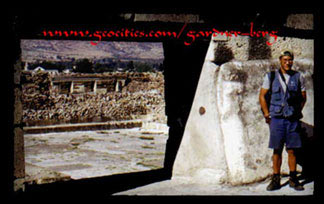 A walk back to the junction to catch another colectivo to Lambityeco - a small site where there are well-preserved stucco heads on display.
A walk back to the junction to catch another colectivo to Lambityeco - a small site where there are well-preserved stucco heads on display.
Further along by colectivo to the turn-off to Dainzu. We walked 1 km uphill, again to the site. The farmers using the road to move their livestock are some of the friendliest people we've met so far. Dainzu is a recently excavated site where its prominent feature is 'Cluster A' featuring bas-relief images of ball players and priests.
A final walk back to catch our last colectivo back to Oaxaca arriving back at 4:30 pm to gouge ourselves into a large plate of roast chicken, salad and rice.
Among the Zapotecs of the Oaxaca Valley, 42 different dialects are spoken and communities just a mountain apart barely understand each other.
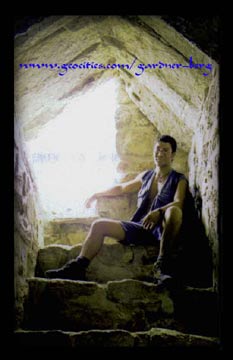
May 22, 1999 -- (7:30pm) We leave Oaxaca and head eastward to the Chiapas region (12 hours by bus). A long and winding route. On the way we pass the Tehuantepic region - mostly peopled by the Zapotecs whose social organisation was once uniquely matriarchal.
May 23, 1999 -- Arrival at San Cristobal de las Casas at 7:30am. This town was named after Bishop Bartolomeo de las Casas, who protested against the harsh treatment the Indians received from the Spanish. Most of the Indian tribes in this region are members of the Tzotzil and Tzeltal groups.
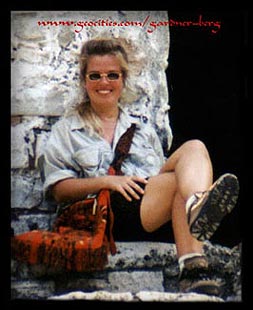 The Chiapas State is rich in ancient Mayan tradition and culture, but it is also the nation's poorest. It is estimated that there are 1 million Indians living in this region. all descendents of the great Mayan civilisation of 250 to 900 AD. The Chiapas Indians of today have, for centuries, lived a life
of subsistence; more so for those who have retained their language and traditions. Illiteracy and infant mortality is very high. The neighbouring state of Tabasco has become a particularly rich area since its discovery of oil off its coast. The border between The Chiapas and Tabasco have very high military presence, therefore placing more pressure on the poorer population to migrate across the border to the Guatemalan highlands.
The Chiapas State is rich in ancient Mayan tradition and culture, but it is also the nation's poorest. It is estimated that there are 1 million Indians living in this region. all descendents of the great Mayan civilisation of 250 to 900 AD. The Chiapas Indians of today have, for centuries, lived a life
of subsistence; more so for those who have retained their language and traditions. Illiteracy and infant mortality is very high. The neighbouring state of Tabasco has become a particularly rich area since its discovery of oil off its coast. The border between The Chiapas and Tabasco have very high military presence, therefore placing more pressure on the poorer population to migrate across the border to the Guatemalan highlands.
Like many living in Mexico's rural highland sectors, the people in this area suffer from parasites, respiratory problems and tropical diseases like malaria, all agravated by chronic malnutrition. But, perhaps. their most serious affliction, as in many indigenous groups around the world, is alcohol. In this region, along with Oaxaca, Indian men spend their minimal savings on Mezcal, frequently getting themselves in debt and vulnerable to extortion from the local landowners (cacique) in the process. This, in turn, places the women of these groups in a more socially inferior role. They are forced to work, cook, have children and to suffer beatings in silence when their husbands are drunk, while their daughters are rarely allowed to attend school even when one exists in the community. Many beliefs and traditions are kept alive by women. The following was submitted by the National Indian Institute (INI) during a study which recorded a Nahua mother from the Sierra de Puebla giving advice to her daughter:
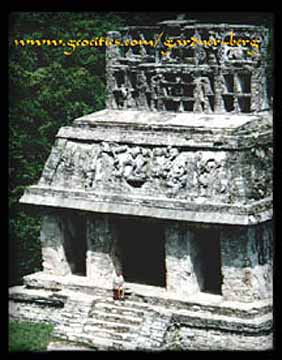
"When you look at the world, think that everything is looking at you. The trees are looking at you and so are the stones on the road. The eyes of the sun are fixed on you. That's why you should be clean. You should walk with elegance, your step should be soft so as not to hurt the earth. Hold your head up high and your hair in place. If men look at you, lower your eyes, but never stoop, not even when you're old. If you stoop, you'll shrink and and become ugly. Everything is looking at you. That's why your image must be good."
Having withstood the military and religious conquests of the early sixteenth century, the so-called 'protection' of the Spanish Crown for 300 more years, the loss of territorial land in the 19th century, the integrationist efforts that followed the Mexican Revolution and the even more aggressive commercialism
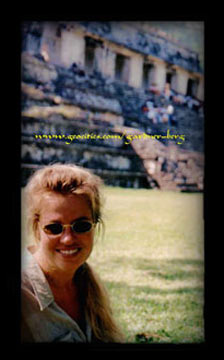 over the past 5 decades, Indian culture has proved its resilience. Lost traditions are mourned, but many others survive. If the concept of a multi-ethnic nation is more widely accepted, Indians might be allowed a stronger
political voice, which was demonstrated in the Zapatista uprising in 1994 here in San Cristobal de las Casas, where the mestizo inhabitants were held under siege by Zapatista guerrillas demanding better living conditions and more equality for the Indian groups. An unfortunate incident which resulted in deaths. In response, the Mexican Government used many delay tactics, but despatched the military to secure the area, thus increasing tensions.
over the past 5 decades, Indian culture has proved its resilience. Lost traditions are mourned, but many others survive. If the concept of a multi-ethnic nation is more widely accepted, Indians might be allowed a stronger
political voice, which was demonstrated in the Zapatista uprising in 1994 here in San Cristobal de las Casas, where the mestizo inhabitants were held under siege by Zapatista guerrillas demanding better living conditions and more equality for the Indian groups. An unfortunate incident which resulted in deaths. In response, the Mexican Government used many delay tactics, but despatched the military to secure the area, thus increasing tensions.
Even if mestizo society fails to recognise the national patrimony represented by Indian culture, a distinct identity will exist even longer, keeping alive an essential part of Mexico that has been more readily recognised when dead.
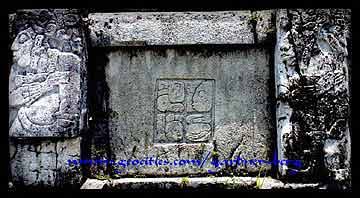 May 26, 1999 -- (0930) We head to Palenque - location of one of the greatest discoveries in Maya archeology. Set in very hot and humid jungle surroundings, the ruins of Palenque is so spread out that one feels completely isolated even though there are many visitors already on the site. Quite often, because of the heat, we would cool off in the cascading brook close by.
May 26, 1999 -- (0930) We head to Palenque - location of one of the greatest discoveries in Maya archeology. Set in very hot and humid jungle surroundings, the ruins of Palenque is so spread out that one feels completely isolated even though there are many visitors already on the site. Quite often, because of the heat, we would cool off in the cascading brook close by.
Palenque is well-known for its well-preserved buildings, carved stucco ornamentation, delicate bas-reliefs, and lengthy hieroglyphic texts. This Classic Period city (300 to 900 AD) reached its height during the reign of King Pacal (615 to 683 AD). His tomb in the Temple of Inscriptions, opened in 1952, was a very important find. We were so impressed with the site, that a second visit the next day was necessary.
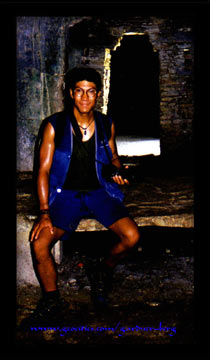 In 1746, Father Antonio de Solis arrived in Santo Domingo de Palenque with family members looking for new lands to cultivate. During a trip into the forest, they stumbled across ruined 'stone houses'. They were the first people from Europe to set foot on the ruin city of Palenque. Since then, news of this reached Europe prompting travelers, scholars and tourists to flock here.
In 1746, Father Antonio de Solis arrived in Santo Domingo de Palenque with family members looking for new lands to cultivate. During a trip into the forest, they stumbled across ruined 'stone houses'. They were the first people from Europe to set foot on the ruin city of Palenque. Since then, news of this reached Europe prompting travelers, scholars and tourists to flock here.
The King of Spain, upon hearing the news, demanded a thorough report of the discovery, Captain Antonio del Rio arrived there May 5, 1786 and requested the authorities to employ 79 Indians to clear the thick undergrowth from around the ruins. Descriptions and measurements of the monuments followed. Then he ordered the removal of as many relics as possible. A stone throne was left unsteady when he removed one of its carved legs; he mutilated a stucco inscription by hacking out the best preserved glyphs. Gaping holes everywhere, in the walls of the palace building and temples. All of these artifacts along with pottery and stone-carved weapons were sent to the Royal Museum of Natural History in Madrid, Spain.
His report was not published until 1822, illustrated with engravings by Jean Frederick de Waldeck. It was believed that such impressive architecture could not possibly be the work of the natives alone. Del Rio, Waldeck and their other contemporaries were convinced that the Greeks and Romans must have had an influence in the construction. Even Waldeck's illustrations were interpreted in such a way that the images were of European origin.
It wasn't until 20 years later that the collaboration between John L. Stephens and Frederick Catherwood produced an impressive body of work documenting a more academic view of the Maya. Their work was published in 1841 - 'Incidents of Travel in Central America, Chiapas and Yucatan'.
Photos and Text Copyright ę 1999-2001 Gardner-Berg. All rights reserved.
Sources of Further Reading-
Katzenberger, Elaine. First World Ha Ha Ha!: The Zapatista Challenge.
Perea, Victor. The Last Lords of Palenque: The Lancandon Mayas of the Mexican Rain Forest. 1986
Scott, John F. Danzantes of Monte Alban (Studies in Pre-Columbian Art and Archaeology. 1978
Zapata-Alonzo, Gualberto. An overview of the Mayan World: The Synthesis of the Olmec, Totonac, Zapotec, Mixtec, Teotihuacan, Toltec, and Aztec Civilizations.

